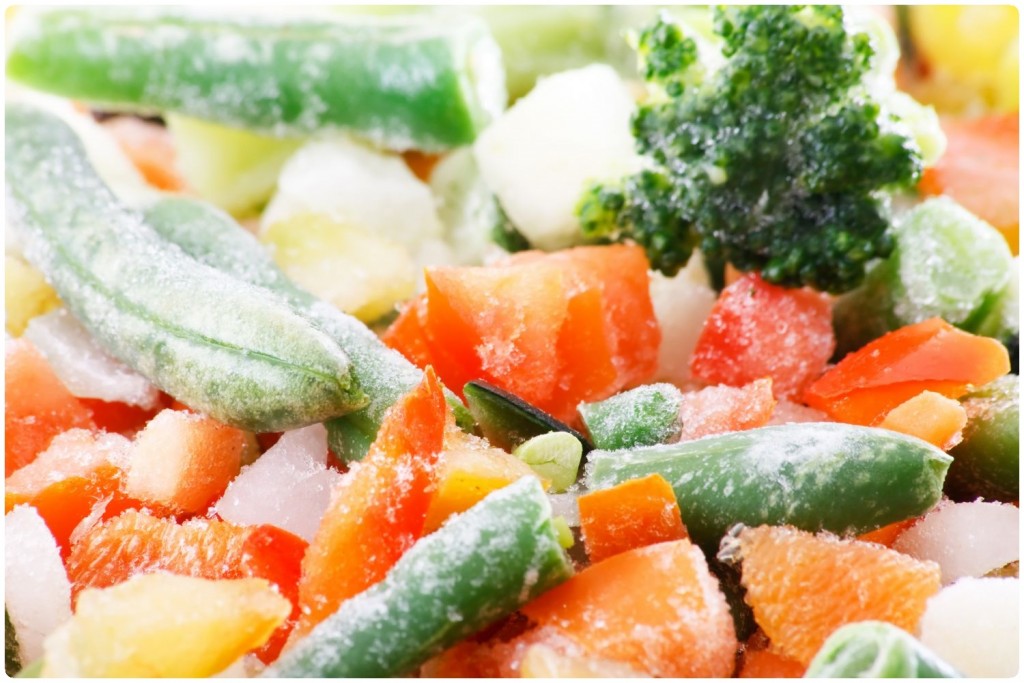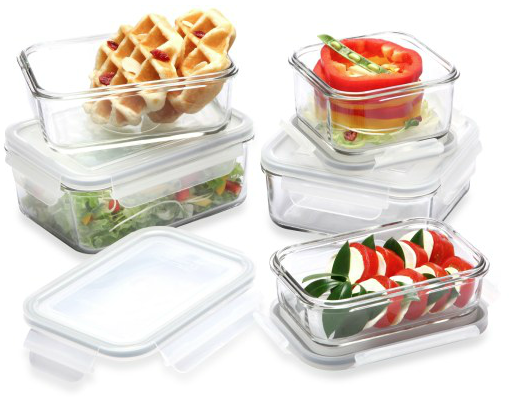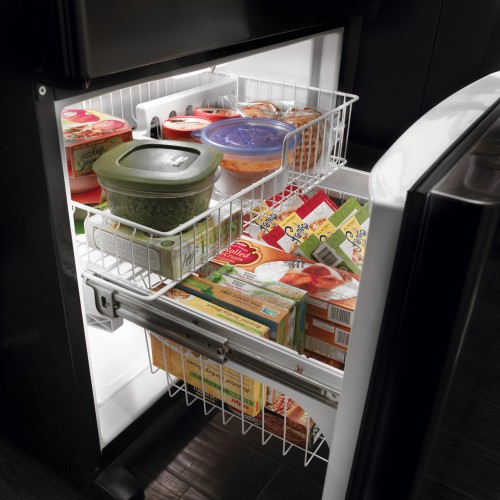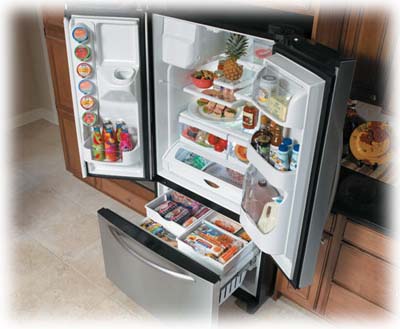Ensure Food Safety When Freezing Food At Home
Freezing food is one of the easiest and most effective methods of preserving food, as shown by the research.
However, despite its hailed benefits, there are certain concerns that one must keep in mind while storing food in the freezer.
Below are some tips on how to ensure food safety when freezing food at home.
Frozen Food Safety Considerations
Freezing usually preserves food for very long periods by preventing any growth of molds, bacterial, and yeast that can cause food poisoning and food spoilage.
Therefore, frozen foods will always be safe to eat as chances of them ever going bad are minimal. However, this is only if the freezer temperature remains at 0 degrees Fahrenheit or below.
On the other hand, long-term freezer storage can cause your foods to acquire an unpleasant smell or weird taste and texture.
So, what should you freeze?
Surprisingly, you can freeze almost any type of food with some exceptions, such as eggs in shells or canned food.
You can freeze butter, margarine, most bread apart from crusty varieties, milk, raw pastry, and grated cheese.
Additionally, foods like vegetables, meat, seafood, and poultry are also excellent foods to freeze because they tend to maintain their quality for a long time.
What not to Freeze
The following foods are not freezer-friendly, so you should never try to freeze them.
- Low fat cream cheese and plain yogurt.
- Soft herbs such as chives or parsley.
- All types of vegetables with high water content like mushy, cucumber, radishes, and lettuce.
What is the proper packaging for the freezer?
When freezing your food, the packaging is essential regardless of the kind of food you choose to freeze.
Foods to be frozen should always be tightly packed in airtight containers or freezer bags. If moisture escapes, the food can become dry.
However, always ensure you leave some space if you are using airtight containers and squeeze some air from bags before sealing just in case the foods expand.
Also, never re-use plastic containers (you get from margarine, ice cream, cottage cheese, whipped topping, etc.) or use cardboard as packaging as they are not designed to freeze foods safely.
The recommended packaging designed for freezing foods includes freezer-safe bags, plastic freezing containers, polyethylene wrap and bags, heavy-weight aluminum foil, can or freeze glass jars, and plastic coated freezer papers.
What is Freezer Burn?
Freezer burn is the pale and dry patches that usually appear on the surfaces of frozen foods.
It is the result of inadequate wrapping and air being trapped within that robs its moisture.
Fortunately, freezer burn does not make the foods unsafe to eat, but it does make them a bit unpleasant and difficult to eat.
How bad is a freezer-burn? Can you die from it?
Freezer burn is when food becomes damaged because of complete moisture loss after being in the freezer for too long. This is why you often hear home cooks refer to rock-solid chicken that’s been in the bottom of the freezer for too long as “freezer burned chicken.”
Freezer burned meat or produce may not look quite right, with a callous exterior, shriveled up fibers, and some discoloration.
This explains why you were prompted to ask about its safety. Before answering that, let’s dive into how freezer burns happen and the consequences of eating freezer-burned food.
Why does freezer burn happen?
Generally speaking, if food has been stuck in the freezer for a long, it will result in a freezer burn. While food may not rot inside a freezer, it is still exposed to air molecules that affect its quality.
Once you do decide to thaw out your freezer-burned food, two things can happen.
- The moisture in the outer layer (in the form of ice crystals) may melt and evaporate; or
- The ice will sublimate, which means that the solid ice crystals will evaporate without turning into liquid water first.
Is freezer-burned food safe to eat?
You will notice that the food may be stale, dried out, or even colored white or grey. But apart from these changes in the texture and physical aspect of the food, freezer-burned food is generally perfectly safe to eat.
It won’t be rotten or spoiled, and there won’t be any health repercussions that you’ll get from eating it. The food won’t just taste like how it’s supposed to be when it’s fresh.
How does freezer-burned food taste like?
- The meat will taste chewier as the dehydration process inside the freezer essentially turns the meat into jerky.
- Produce will taste a little stale and dry, so cooking in liquids is highly suggested.
Can you get food poisoning from freezer burn
Freezer burn is the result of air coming into contact with food, causing the loss of moisture and resulting in dry and discolored patches on the food.
While it may not look appetizing, it is generally safe to eat. However, if the food has been in the freezer for an extended period of time, or if it was not properly stored before being frozen, it may have developed bacteria or other harmful microorganisms that can cause food poisoning if consumed.
It’s always best to err on the side of caution and discard any food that has freezer burn or that you suspect may have been contaminated.
How can I cook freezer-burned food properly?
Because freezer food is perfectly safe to eat, it will be unreasonable to throw it out as there are still ways to salvage it and cook it properly. On that note, how can you cook freezer-burned food to maximize the quality, taste, and texture?
Meat
- Defrost it properly by thawing it in the refrigerator or a bowl of water.
- Do not use warm water or put it in the microwave as this may lead to bacterial growth or foul odors.
- If the meat is just slightly freezer burned, use it as usual after defrosting.
- If there is a layer of discoloration or toughness on the meat, cut these away along with any fat that may have gone rancid.
- If there are discolored parts underneath the surface, brining or heavy seasoning is recommended. Brining will bring back the moisture into the meat, while heavy seasoning will help disguise the meat’s off-taste.
- Slow cook the meat in a Dutch oven, crockpot, or sous vide. Slow cooking is a great way to salvage the meat while bringing back the moisture without worsening the texture.
Vegetables
- Defrosting with warm water for vegetables and produce is ideal.
- Defrosted vegetables may now be used as you would with fresh produce.
- Drizzle some lemon juice to bring out the freshness.
- The best way to hide the staleness of freezer-burned produce is to puree or dehydrate them.
Freezer burn vs ice crystals
Freezer burn and ice crystals are two distinct issues that can occur when storing food in a freezer. Freezer burn occurs when air comes into contact with food, causing the surface to dry out and become discolored.
Ice crystals, on the other hand, are caused by fluctuations in temperature that cause water molecules in the food to freeze and thaw, creating small ice crystals on the surface.
Both can affect the taste and texture of the food, but freezer burn is considered to be more detrimental as it can cause the food to become inedible. To prevent both, food should be properly wrapped or sealed and stored at a consistent temperature.










